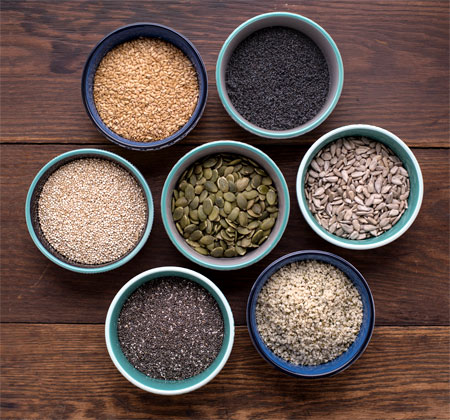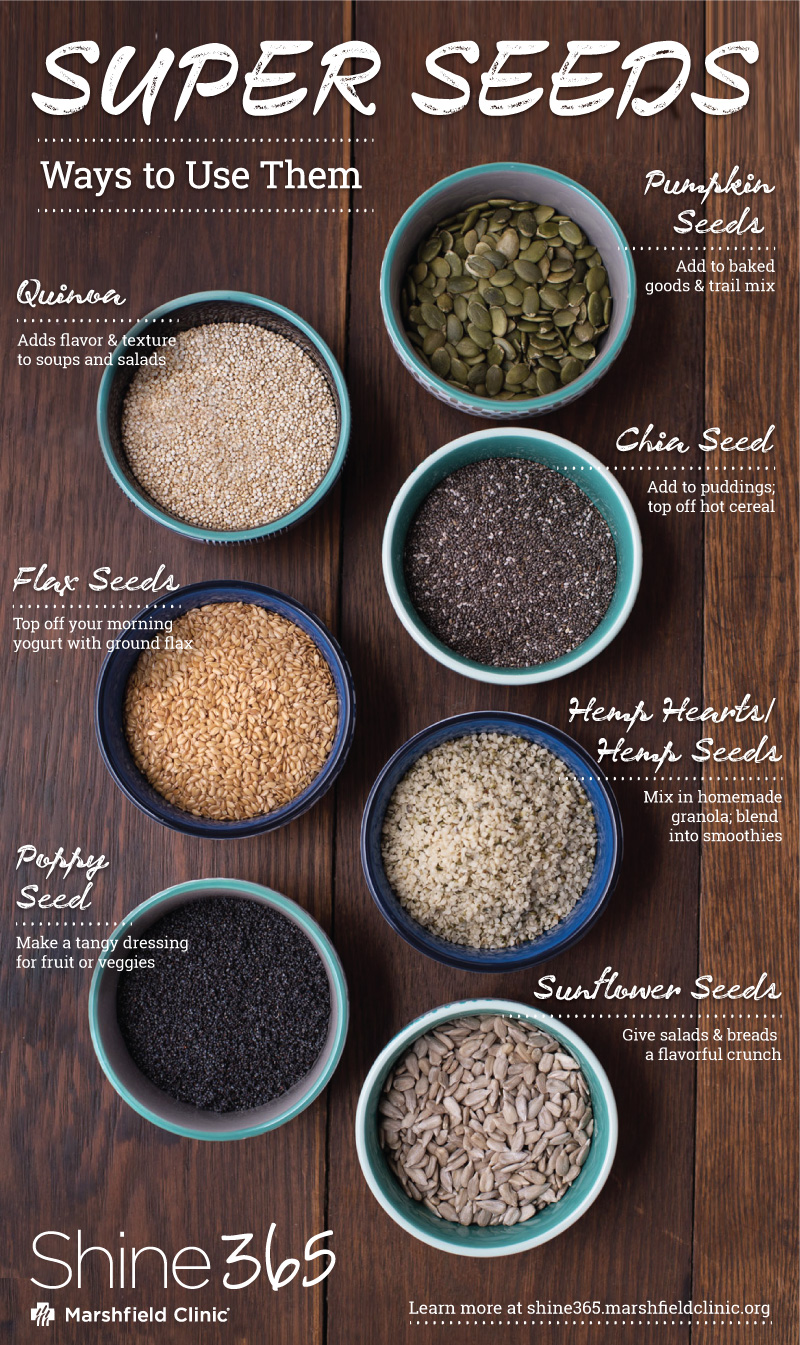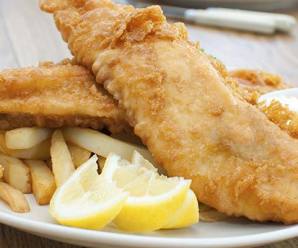
Have no fear. Super seeds are here!
Did you know that adding just one ounce, or 2-3 tablespoons, of seeds per day to your diet can improve your overall health?
Defining ‘nutrient dense’
Super seeds have higher levels of vitamins and minerals compared to most foods in the American diet. This earns them the name “nutrient dense.”
Chia, flax, sunflower, poppy, sesame, pumpkin, hemp seeds and quinoa fall into this “super seed” category for their nutrient-dense qualities.
As a country, we are overnourished and undernourished at the same time,” said Shelly Wildenberg, a registered dietitian at Marshfield Clinic. “We get far too many calories in our western diet from highly processed foods, leading to excess weight, yet not nearly enough nutrients.”
Many populations around the world don’t use the “super food” term, she said. Seeds are simply part of their typical diet and they tend to be healthier than the average American.
Generally, 1 tablespoon of super seeds has about 50 calories, 2 grams protein, 2 grams fat, 2 grams fiber and is low in carbohydrates. Other nutrients include B vitamins, calcium, magnesium, iron and zinc.
To put it into perspective, seeds contain enough nutrients to support the life of a plant as it sprouts and grows. They really are amazing.
Ancient civilizations depended on seeds
Ancient civilizations relied on seeds for nutrition in daily activities and before competitions or races.
The Institute of Food Technologists shares some history:
- Chia seeds were essential sources of energy for Incan, Mayan and Aztec cultures.
- “Chia” comes from the Mayan language and means “strength.”
- Incas referred to quinoa as “the mother of all grains.”
- Quinoa was a staple food for thousands of years in the Andes region of South America because it was one of few crops that could grow at high altitudes.
- Cultivation of flax began in Mesopotamia 10,000 years ago and was valued as both food and medicine.
- Sunflower seeds are native to North America, likely identified as a food source around 900 B.C.
- The hemp plant has been used for more than 5,000 years in Europe and Asia for fuel, fiber, food and medicines.
Add seeds to your diet
“Be creative with how you add seeds to your snacks and meals,” Wildenberg said. “I eat seeds on a regular basis in my smoothies, baked goods and salads.”
Wildenberg said she likes trying new recipes and modifying recipes to include seeds. Pinterest is a trendy place to start your search for seed recipes if you need inspiration and ideas.
Add seeds to your smoothies, salads, yogurt, cereal or oatmeal. Additionally, these seeds have thickening qualities so they can be ground and added to soup.
And, replace nuts in your muffins with seeds.
“We add walnuts to many baked goods, so why not sunflower or pumpkin seeds?” she said. “Ground seeds like chia, flax, sunflower or pumpkin could also be used in place of a quarter of the flour in most recipes.”
Tip: To grind chia, flax, pumpkin or sunflower seeds, purchase a coffee grinder. Grind only what you need because the fats go bad quickly. If you buy ground seeds, store in an airtight container and refrigerate or freeze for use within a few months.

Super seeds recipe ideas
Start on super seeds today with these Shine365 recipes:
- Fabulous Flaxseed and Blueberry Pancakes
- Chocolate Chia Seed Pudding
- Carrot Cake Muffins
- Quinoa and Black Bean Salad
- Flaxseed Apple Raisin Muffins
- Cranberry Spinach Salad






Leave a Reply